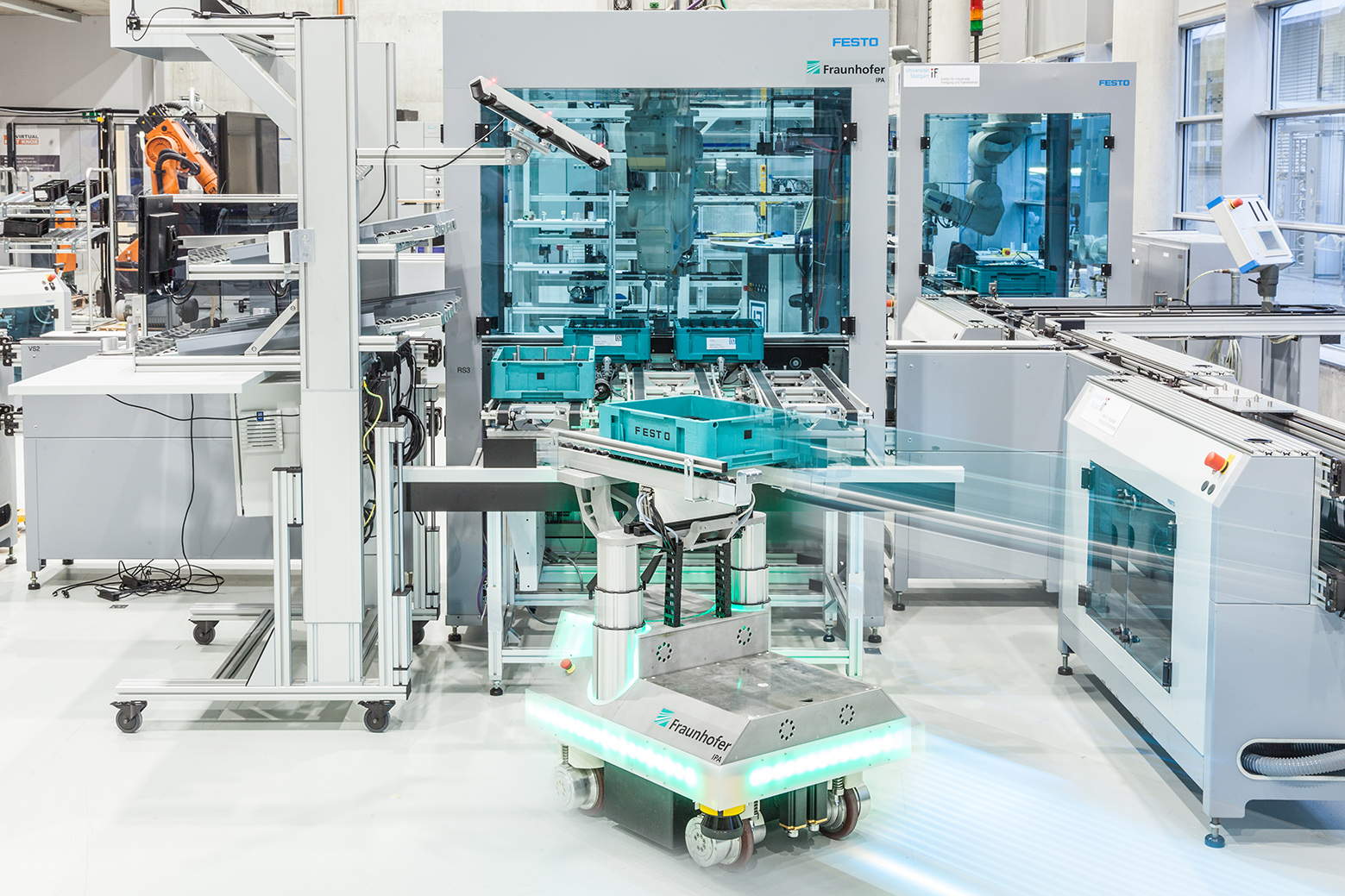Robot Navigation via the Cloud
A four-person research team headed up by Kai Pfeiffer from the Robot and Assistive Systems Department at Fraunhofer IPA has developed a cloud-based navigation technology. It increases the reliability, flexibility and efficiency of driverless transport systems (DTS). At the same time, the new approach facilitates versatile production and provides production planners with valuable data on what are known as digital shadows.
DTS are still rigid installations in the vast majority of operational environments: The individual vehicles tend to mostly follow pre-defined routes. Their on-board sensors must continuously record data on the operational environment that is required for path planning. If an obstacle is in the way, they stay put until the coast is clear. Traffic can come to a standstill at intersections. Once installed, the DTS can only be adapted for new layouts at some expense.
To prevent costly and timely modification measures, a four-person research team led by Kai Pfeiffer has linked together all driverless transportation vehicles and external laser scanners in a factory building via the cloud. Dr. Pfeiffer, who has a PhD in Engineering, explains: »Cloud navigation facilitates cooperative mapping and path planning using a central navigation server. It calculates the paths of each individual vehicle and immediately makes corrections if it identifies any obstacles.«

Area map is always up to date
Fraunhofer’s proprietary software module »Cooperative Longterm-SLAM« (SLAM = Simultaneous Localization and Mapping) is an integral part of the cloud navigation: All permanently installed laser scanners in the area and the sensors of each and every transport vehicle collate data on their environment and create a map that is continuously updated. Kai Pfeiffer adds: »The cloud-based navigation server used this data to calculate the route maps for each individual vehicle.«
»Predictive Driver« (a further development on the software module »Elastic Band«) is, in contrast, responsible for reactive path planning. It reacts to spontaneously occurring obstacles and calculates an alternative route. If the routes of two driverless transportation vehicles intersect, their movement planners coordinate via the cloud. This prevents congestion and even collisions.
Potential savings from cloud navigation
A pre-existing DTS can be equipped with cloud navigation at any time. This means that the cloud solution can be implemented locally – at operation site – as a type of host computer. The first applications have shown the clear advantages of cloud navigation. The researcher adds: »Tests have shown that this can improve localization accuracy by up to 75%. Moreover, cooperative path planning reduces the distances traveled by up to 20%, while seamless traffic at intersections leads to time savings of 25%.«
Cloud navigation even leads to hardware savings: the individual driverless transport vehicles can get by with fewer sensors and less processing power since they do not have to carry out computationally intensive navigational algorithms. Dr. Pfeiffer summarizes: »In this way, DTS are both more efficient and more economic. The energy requirement per processing unit is reduced by 70% and the costs for sensors fall by up to 80% in some cases.«